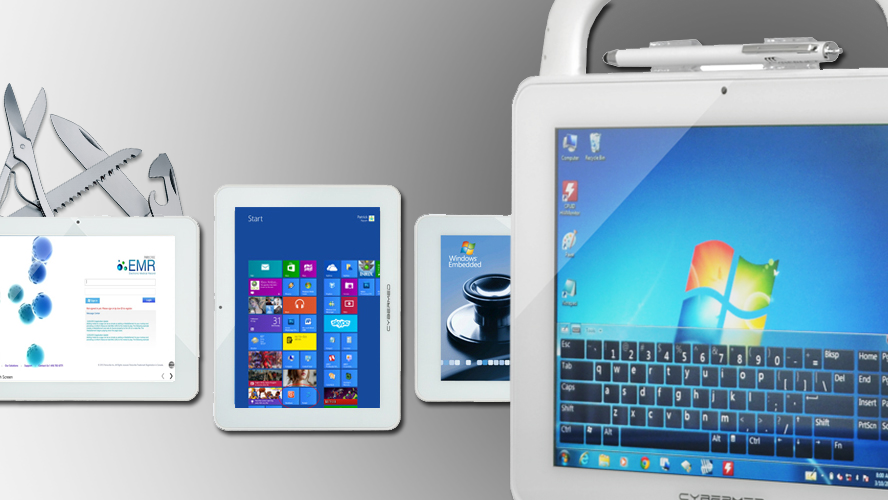Energy efficiency presents both a challenge and an opportunity for healthcare facilities. The main challenge is the unique circumstances healthcare facilities face. Regulatory requirements, infection control, the intensity of energy and water use, 24/7 uninterrupted operation set healthcare facilities apart from commercial ones. Thus, energy efficiency in healthcare requires different strategies than those that are effective for other industries.
In an environment where so many other priorities such as patient safety, system redundancy, equipment reliability are urgent, energy efficiency can get overlooked. Yet, escalating costs of health care and a changing formula for hospitals reimbursement urge hospitals to prioritize saving money. Luckily, boosting energy efficiency is a win-win scenario, as efficient energy management contributes to not only savings but an increase in profits and a decrease in a hospital’s carbon footprint.
“A 30% savings in energy costs has the potential to improve profitability by up to 1%. That can translate to a savings of nearly $1,444,000 in 28 patient days for a typical 235-bed hospital with a 59.8% maintained bed occupancy,” states a study by Schneider Electric.
Have A Plan, Define Efficiency
Article Guide
Reducing energy consumption requires a detailed plan, staff buy-in from C-suite to cleaning workers, benchmarking and commitment. All the steps towards energy efficiency in a healthcare facility can be divided into 2 categories: quick improvements with 6-12 months payback and long-term goals with 5-10 years returns in savings and increased revenue. Simple solutions are realized first, allowing the energy saving effort to gain momentum.
30% of energy consumed in hospitals is used unnecessarily, according to Environmental Protection Agency (EPA). Understanding what efficiency means is the first step that will significantly decrease energy spending in the first 12 months. Efficient does not mean less, it means appropriate use and management of systems and equipment.
Measure Your Facility’s Overall Energy Performance
To know you’re saving with energy efficiency, you have to measure your current performance first. Benchmarking a facility’s energy performance using the EPA’s free tool Energy Star Portfolio Manager gives hospitals a clearer idea of their energy usage. Its algorithm enables hospitals to compare their energy use intensity measurements to national averages, normalizing differences in climate, size, and operational intensity.
Audit
An energy audit, according to Department of Energy’s Advanced Energy Retrofit Guide for Healthcare Facilities, is the next necessary step after benchmarking. Facilities can hire outside consultants or employ an on-site manager to conduct a thorough audit of all systems. The aim is to detect inefficiencies while the methods vary from simple walkthroughs to placing submeters on individual systems in a building, and comprehensive analysis.
Eliminate Leaks
Before you invest in new equipment, detect which pieces might be leaking energy. Perhaps, some equipment consumes energy when it is turned off. For clinics that operate during business hours only, this means the equipment is consuming energy 16 hours a day while idling. Deploying energy-efficient power strips can prevent such energy leaks while the equipment is not used.
HVAC Optimization
American Society for Healthcare Engineering’s (ASHE) Sustainability Roadmap recommends HVAC preventive maintenance as a sure means of reducing energy costs. Retrocommissioning existing HVAC equipment and controls reduces energy spending at hospitals by 10%. HVAC equipment tends to fall out of calibration over time, or its systems are often used unnecessarily 24/7, so looking at HVAC alone will give you fast results.
From timely replacement of air handling filters, replacement of leaking steam traps and cleaning cooling towers to more thought-through changes such as turning heating/cooling down or off when and where it is not needed, HVAC optimization is a no- or low-cost effort with instant gain. In many cases, it requires reprogramming different schedules individually in the building control systems. For example, administrative areas do not require 24/7 climate control.
Kitchen and Laundry
The same holds true for kitchen and laundry systems – not every washing requires hot water rinse. So, instead of using hot-rinse for everything, your personnel can program cold-rinse when appropriate, effectively reducing energy consumption.
Equipment Replacement and Upgrades
In most cases, healthcare facilities replace equipment with more energy-efficient and modern options when the old equipment’s lifecycle comes to an end, or it becomes depreciated altogether. However, if you detect a piece of equipment that is a real energy hog, consider replacing or upgrading it ahead of time.
For example, Virginia Commonwealth University Medical Center upgraded their 8-year old Dräger MDS III Anesthesia Workstations by replacing too expensive to maintain computers with CyberMed H22 Medical Grade All in One Computer. In the modular workstations, the anesthesia machines have longer life cycles than the PCs, so replacing the PCs by more energy-efficient and modern computers not only helped cut the energy waste but extended the life of the anesthesia equipment.
Hospitals invest in digitization as mandates the ACA anyway, so the decision-making staff should be informed about the energy efficiency requirements when selecting new equipment. When considering patient infotainment systems, office back-end desktop computers, medical monitors and medical tablets used by doctors, nurses and emergency units, they must take into account power consumption.
The medical PCs with Power over Ethernet capability use half of the power of a typical PC and remain powered even during power outages, as long as the server is up. More so, when introducing new systems such as infotainment, or upgrading to an EMR, PACs, VoIP or mobile, hospitals upgrade their power and cooling systems 87% of the time within one year of implementation. Computers with PoE allow hospitals to reduce or avoid that spending.
When replacing dated washing machines and dishwashers, printers, scanners, and water coolers, opt for energy-efficient models with Energy Star. These consume 30-75% less energy than standard models.
Medical equipment manufacturers produce ever-more sustainable models. MRI and CT scanners now come lighter and smaller, use 50% less energy and operate 75% faster than dated systems. Their radiation output is minimized, so they require less shielding. Energy savings stemming from newer equipment are evident.
Going Smart
Projects with longer returns on investment produce tremendous payback. Operating rooms’ air changes can be configured to 6 per hour when the OR is not in use instead of always running on the minimum of 20 per hour for when it is used. The configuration can rely on motion sensors, or be triggered by lights going off.
Replacing fluorescent tubes with LED tubes is another route many facilities are taking to reduce energy costs.
Redesigning waste management can result in $0.4 per patient a day savings over five years, says a Commonwealth Fund study. Eliminating red medical waste bags misuse, installing Wi-Fi-enabled cans with smart sensors that compact trash and signal when they’re full can amount to significant savings.
Motivating Staff
The energy efficiency efforts require staff commitment. There are many ways of achieving that, from online classes and quizzes to on-site training and committees, messages on the electronic message boards, newsletters, or to more involving, friendly competitions among departments, with subsequent rewards and praise.
Going Green
Renewable sources of energy require considerable investment with long-term returns. Still, in an era when entire nations shift to renewable sources and eliminate their dependence on fossil fuel, healthcare facilities need to act proactively. Be it solar, wind, or geothermal sources, buildings under construction or facilities with direct access to renewable sources of energy must explore their opportunities.
5 Ways Medical Tablets Boost Workflow and Cut Costs
August 23, 2017
The IT infrastructure convergence has been a hot topic across many sectors but is particularly relevant for healthcare. Tight budgets, stretched human resources, and increasingly strict regulations urge organizations to…
0 Comments7 Minutes
3 Ways to Automate Tedious Paper Processes in Hospitals
May 21, 2018
Nurses and doctors often voice the desire to go paperless. A recent report from International Data Corporation shows that about 40 percent of healthcare institutions have implemented paper reduction processes to operate…
0 Comments7 Minutes
4 Ways That AI will Affect Medical Computer Systems
August 28, 2018
The term “artificial intelligence” conjures images straight out of science fiction blockbusters: super-smart machines controlling all aspects of life, and often running wild to destroy their human creators. In reality,…
0 Comments6 Minutes
You Can't
Learn from a Pop-up
But we can deliver knowledge to your inbox!
We dive deep in the industry looking for new trends, technology, news, and updates. We're happy to share them with you.
Knowledge, News, and Industry Updates Right in Your Inbox





